Planting a succulent garden
The innovative team of Master Gardeners at the Elkus Research Garden in Half Moon Bay are always looking to find beautiful plantings that thrive in a low-water garden.
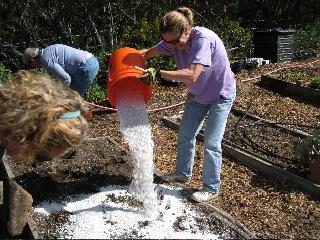
We began our garden renovation in the spring. Existing soil in a 4’x8’ bed was weeded, turned, and the chunky bits removed.
We added:
• Two cubic feet of perlite
• Two cubic feet of cactus mix
• One cubic foot of volcanic rock
These additions were to provide the excellent drainage succulents require.
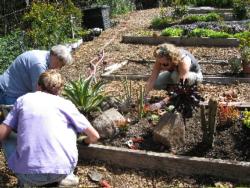
The plants included a variety of both succulents and cacti: Sedum spp. (pork and beans, dragon’s blood, S. spathulifolium Cape Blanco, and variegated dragon’s blood), Euphorbia tirucalli (firesticks), Sanseveria cylendrica, Agave spp., Aeonium schwarzkopf (black top aeonium), ‘hens and chicks' (assorted succulents in the Crassulaceae family), and others.
Three large landscape rocks (referred to as ‘headstones’), and a river of broken terracotta bits completed the garden.
Results
After only three weeks, some of the plants began to flower. We expected the bed to fill out in no time.
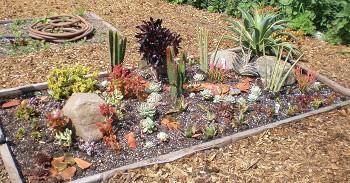
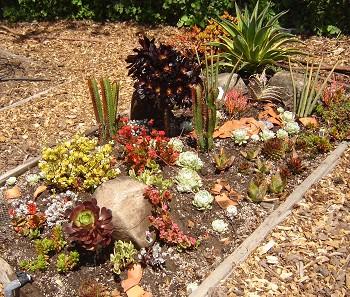
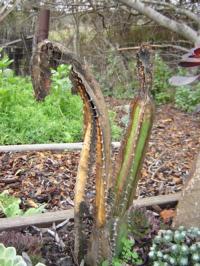
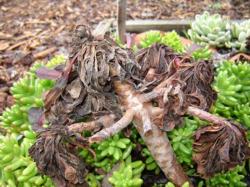
The majority of the plants are still alive and will produce new growth in the coming spring. Next fall we will place a protective fabric over the bed when frost threatens, and we'll see if that keeps our lovely succulents and cacti healthy through the winter.
Our Water Usage:
The entire succulent bed was watered by hand for a total of six times during the year (about five minutes each time). That was a considerable water savings over our flower and vegetable beds, which were watered twice a week for 24 weeks.
Once the succulents filled the entire available soil surface, there was very little weeding to be done (no room for weed seeds to take hold). There was also very little pruning or deadheading in the succulent garden.
If you’re looking for an attractive, low-water, low-maintenance garden, give cactus and succulents a try!
